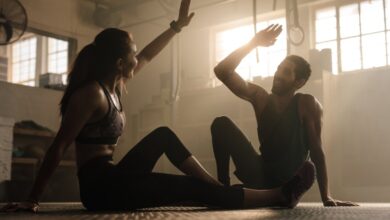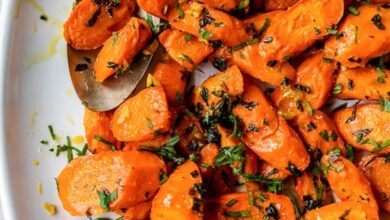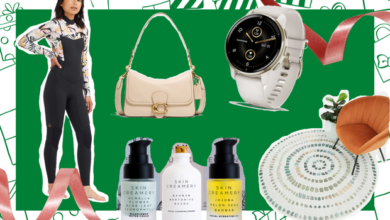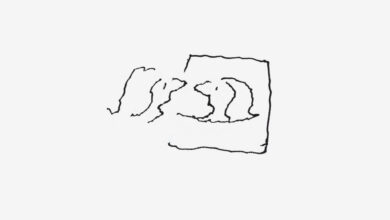N95, KN95 or KF94? How to find the right Covid mask

The rapid spread of the infectious Omicron variant has prompted many people to attempt to upgrade to a higher quality mask. But that is easier said than done.
Anyone who has bought a mask online or in stores has discovered a dizzying array of choices in a variety of shapes, sizes and colors. Knowing which mask to choose and making sure it's not fake requires the detective skills of a forensic investigator. And once you've decided on one, it's still a gamble; Many people find that they have ordered a mask that is too big or too small for their face, or just doesn't fit properly.
"Nobody made it easy, that's for sure," said Bill Taubner, president of Bona Fide Masks, the exclusive United States distributor for Powecom and Harley KN95 masks sourced from China. "A lot of people end up doing a lot of research."
Unlike cloth masks, high-quality masks — called the N95, KN95, and KF94 — are made with layers of high-tech filter material that captures at least 94 to 95 percent of the most dangerous particles. Under the microscope, the filters look like dense forests of tangled fibers that capture even the most elusive particles that can bounce around and escape the fibers of cloth masks. High-quality masks also have an electrostatically charged filter that helps attract and trap particles.
At the beginning of the pandemic, high-quality medical masks and respirators were in short supply. The problem now is that there are so many different masks for sale that it's difficult to know which ones have been tested and certified by government agencies and which ones are fake. Test studies have found that many fake masks don't even provide the same level of protection as a cloth mask. We asked mask manufacturers, importers, public health officials and independent researchers for advice on choosing a quality mask. Here's a guide.
Choose your mask style.
Masks come in different shapes and sizes. You will find "cup" style masks, "duckbill" masks and "flat fold" masks. The best mask is the one that fits your face snugly and is comfortable. Order in small quantities first and try different styles to find the best one for your face. Many masks are described as "one size fits all". But some come in small or larger sizes. "You can't get the full benefit of a respirator if you put it on and it doesn't seal your face," said Nicole Vars McCullough, vice president of personal safety at 3M Company, the largest US manufacturer of N95 masks.
N95 breathing mask
the N95 Respirators are regulated by the National Institute for Occupational Safety and Health (NIOSH), a division of the Centers for Disease Control and Prevention. Almost all N95 masks use head straps – two elastic straps that wrap behind the head. If a mask claiming to be an N95 has ear loops, it is most likely a fake. The CDC has a guide to spotting counterfeit N95s.
the KN95 similar to the N95 but with ear loops and meets Chinese medical mask standards. Some people prefer them because of the comfort and because they come in smaller sizes. While you can find legitimate KN95 masks, the supply chain is riddled with counterfeits and there is little regulation or oversight of the product. A study found that 60 percent of the supply of KN95s in the United States are counterfeit. Read on to learn how to spot them.
KF94
the KF94 is a high quality mask that folds flat and is made in Korea. It is specifically designed for the consumer market. The KF stands for "Korean Filter" and the 94 means that it filters 94 percent of the particles. The masks are heavily regulated in Korea, which reduces the risk of counterfeiting. However, some fake masks made in China may be marked KF94, so buyers still need to do their homework.
Masks for children
The mask market is particularly difficult for parents trying to find masks for children. No N95 mask has been approved for children, therefore any mask claiming to be a N95 mask for children is counterfeit. However, N95s are available in S/M sizes which might suit some older children. KN95 and KF94 masks have designs for children. So once you've found one, you'll need to go through the same verification process you would use for an adult mask using the links below.
updated
Jan. 16, 2022 at 11:00 am ET
Buy from a reputable seller.
Large retailers like Home Depot and Lowes typically work directly with manufacturers who are NIOSH accredited or their distributors. So if you find an N95 mask in a large retail store, you can be sure you're getting the real thing. It's a good idea to check manufacturers' websites to see where they sell their products and who their authorized retailers are, said Dr. McCullough. 3M has created a dedicated section on its website to help consumers spot counterfeit masks.
Finding a reliable mask on Amazon is more difficult as you will see legitimate masks mixed in with fakes, although the differences aren't always obvious. If you must use Amazon, try shopping directly at local stores from mask manufacturers like 3M or Kimberly-Clark. (You can usually find a link to a manufacturer's online store just below a product name.)
If you buy a KF94 from Amazon, look carefully at the box to make sure it's made in Korea and has the required marking (see below for more details). Aaron Collins, an engineer who routinely tests masks and is known as the "mask nerd" on YouTube, recommends buying KF94 from Korean beauty importers like Be Healthy or KMact. Once you know the names of some KF94 manufacturers you can try to find their websites to see where they are sold. For example, Happy Life lists its five US distributors on its homepage.
You can sometimes find N95 and KN95 masks for sale directly on a mask manufacturer's website such as Demetech and Armbrust USA. You can also look for companies that are exclusive distributors of KN95 masks, like Bona Fide Masks. The non-profit website Project N95 is also a reliable place to shop.
Check the labels and the print.
Legitimate N95 and KN95 must have specific text stamped on the front of the mask. Although you might find one in a fun color, masks that are printed with fancy designs or don't have text embossed on them are likely fake.
Your N95 should be marked "NIOSH" along with the company name, model and lot number, and what's called a "TC Approval Number" that you can use to look up the mask in a list of approved masks. The CDC created an infographic to show you what imprints to look for on your N95.
A legitimate KN95 should also have text, including the manufacturer's name, model, and "GB2626-2019," which is a reference to a quality control standard approved by the Chinese government.
The KF94 will not be stamped with text, but the box should say "Made in Korea" and include the product name, manufacturer, and retailer name. An expiry date and batch number are also printed on the packaging. (Electrostatic masks all have an expiration date.) If your mask came from a Korean importer, the information on the packaging will be in Korean, but many companies have started creating English-language packaging.
The coronavirus pandemic: important things to know
Use trusted sources.
A number of resources have emerged to help people navigate the mask buying process. Project N95 is a non-profit organization known for auditing their mask suppliers. Mr. Collins, the mask nerd, has created a number of lists and resources for mask buyers. You can check out his Twitter feed, his YouTube channel, and a spreadsheet he created of almost 450 different masks and how they performed in his tests.
Mr. Collins is perhaps best known for his list of children's masks. While there is no approved N95 mask for children in the US, mask manufacturers in China and Korea have developed KN95s and KF94s for children, including some with child-friendly colors and prints. Mr. Collins created a video "Primers for Parents" about finding a quality mask for children that has been viewed more than 100,000 times.
"I had withdrawn from the mask test," Mr Collins said, noting that he does not receive any compensation for his work. "But I came out of retirement to do the kids video. Unfortunately, the only place I've seen a list of test dates is me.”
Wirecutter, a product review site owned by The New York Times, has a guide for buying quality masks, one for buying masks for children, and a list of 12 warning signs that your mask might be a fake.
Please investigate.
It's not easy, but the C.D.C. has some lists you can use to confirm that a mask has been verified. A note of caution: If you can't find a specific mask, make sure you've looked it up correctly, said Anne Miller, executive director of Project N95. For example, a Gerson N95 mask will not be found under the letter "G". It's listed under "L" because the full name of the company that makes it is Louis M. Gerson.
For N95 mask information, see the CDC's Alphabetical List of NIOSH-Approved Respirators. You can also look up the TC Approval Number from the Certified Equipment List.
For KN95 masks, you can use two Food and Drug Administration checklists. The FDA created these lists early in the pandemic, when the agency issued an emergency use authorization that allowed healthcare workers to use KN95 masks due to a shortage of N95. Now that the N95 supply is adequate, the agency has revoked the permit for these workers, but other people can continue to use KN95. Although the list is now a bit out of date, finding your mask on it gives you peace of mind that it's less likely to be counterfeit – with the caveat that there is no longer official US supervision for any of these companies. You have to scroll down to find the list and search box.
Use this F.D.A. List to find KN95 masks made in China and this list for KN95 masks made in other countries.



